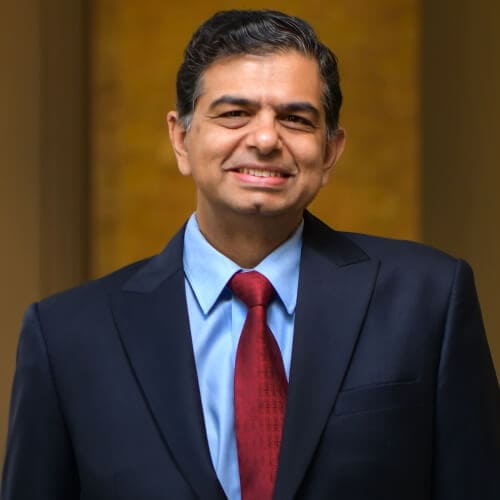{{item.title}}
{{item.text}}

{{item.title}}
{{item.text}}
Finance Minister Nirmala Sitharaman presented a record seventh consecutive Budget on July 23, for the financial year 2024-25. Explore this page for Union Budget 2024 highlights and analysis.
INR 2.66 lakh crore is earmarked for rural development, including rural infrastructure.
The fiscal deficit for FY25 is projected at 4.9% of the GDP 2) An allocation of INR 1.52 lakh crore is designated for agriculture and allied sectors.
Investment-ready ‘plug and play’ industrial parks with complete infrastructure will be established nearly 100 cities.
INR 2 lakh crore is allocated to generate job opportunities for 4.1 crore youth over the next five years.
Three employment-linked incentive schemes have been introduced: first-time employment incentive, creation of jobs in the manufacturing sector, and employer support.
Customs duties on gold and silver have been reduced to 6%, and for platinum it has been reduced to 6.4%.
Angel tax has been abolished for all classes of investors.
Three additional cancer medicines will be fully exempt from customs duties.
A capital expenditure allocation of INR 11.11 lakh crore has been set, equal to 3.4% of GDP.
The Union Budget 2024–25 presents a detailed roadmap for India’s pursuit of ‘Viksit Bharat’ — envisioning a prosperous and inclusive India by 2047. Explore Budget highlights, including an economic outlook and key tax and regulatory proposals to understand the implications to your businesses.
Key budget proposals and tax amendments impacting the Financial Services and Private Equity sector. Download the budget booklet for a detailed analysis and insights on the tax and regulatory impact on various stakeholders in the Financial Services sector.

The budget highlights India’s next leap forward – empowering the very nucleus of the nation – Indian citizens. Right from driving the participation of women in the workforce to enhancing the employability of the youth across the nation, the focus on building a future-ready workforce is evident. With the right incentives and fiscal support, the Government has paved a clear path towards a Viksit Bharat – bringing together the power of the private and public sector, and reinforcing this with our distinctive demographic advantage.
Sanjeev Krishan,
Chairperson, PwC in India

Giving a glimpse of the envisaged Viksit Bharat, Union Budget 2024 focuses on core issues such as empowering the youth through skill development, promoting ease of doing business for MSMEs, and boosting rural and urban infrastructure. With its three cornerstones—demography, digital and development—the Government has demonstrated a strong commitment to the holistic development of the nation.
The substantial boost to both urban and rural infrastructure, with promised investments, has the potential to transform our economic landscape. Additionally, provisions under public-private partnerships, such as e-commerce export hubs, will empower our MSMEs to gain global recognition, driving growth and innovation. The budget also provides a framework of encouraging the growing startup ecosystem, which is necessary for inclusive development. Overall, this budget points the right amount of resources towards the right causes, in the right way.
Vivek Prasad,
Markets leader, PwC India

The Union Budget 2024 focuses on sustainable economic growth and underscores the government's unwavering commitment towards fortifying India's infrastructure and fostering inclusive development.
Demonstrating the balanced approach of this year’s budget, a fiscal deficit target of 4.5% and the historic INR 10 lakh crore for urban housing is set to transform cityscapes and improve the living standards for a large section of the country’s population, while the investment of INR 2.7 lakh crore for rural infrastructure promises to modernise villages and enhance connectivity.
The focus on education and skilling will spur job creation and equip GCCs operating in the country to grow faster. Additionally, the MSMEs and new manufacturing units will also benefit from this as they will gain access to the future-fit workforce of the country.
Furthermore, the transit-oriented development of14 cities with an unprecedented INR 11 lakh crore infrastructure outlay will catalyse economic growth, spur innovation and attract substantial private investments, and help India strengthen its position as a global economic powerhouse.
Arnab Basu,
Partner and Leader Advisory, PwC India
This Budget is expected to set the stage for economic growth and to provide a roadmap for attaining the objective of Viksit Bharat 2047.
Join us as our subject matter experts explore and evaluate the implications of Budget 2024 through a series of Budget updates.
Date: Wednesday, 24 July 2024
Time: 10am India | 12.30pm Hong Kong/ Singapore | 1.30pm Tokyo
Bhavin Shah
Deals Tax Leader,
PwC India
Rajat Tandon
President,
IVCA
Dipesh Shah
Executive Director (Development), IFSCA
Kunal Shah
Partner, Price Waterhouse & Co LLP
Himanshu Mandavia
Partner, Price Waterhouse & Co LLP
Mohammad Athar (Saif),
Partner and Leader Capital Projects and Infrastructure Development, PwC India
A budget focused on job creation and enabling India’s competitiveness in manufacturing and services by promoting urban-industry synergies and providing for quality infrastructure
Ranen Banerjee,
Partner and Leader Economic Advisory, PwC India
Fiscal prudence is the highlight of the full Union Budget 2024-25. The government has gone with realistic projections on its revenue and expenditure estimates and refrained from announcing overly populist measures. The majority of the allocations, including the capex allocation, are as outlined in the interim budget, thus providing continuity. The capex being kept at INR 11.11 trillion was expected, given that the ability to consume this allocation is limited due to disruption from the elections in the first quarter and the second quarter being typically slowed down by the monsoons. The urgency around skilling requirements has been rightly reflected through announcements related to skilling loans, interest subvention on higher education loans and incentives to corporates for providing internship opportunities. The budget has also announced a focus on ‘Purvodaya’ or development of the eastern states, which is an imperative given that incomes and opportunities have been lagging in many of these states. This will provide a fillip to these states to bridge the income gap with other states while also helping to achieve the goal of inclusive development.
Amit Roy,
Partner and Leader – Insurance and Allied Business, PwC India
The growth and development-oriented Budget 2024 is likely to have a positive ripple effect for the insurance sector in areas of:
Sambitosh Mohapatra,
Partner and Leader - ESG, Climate and Energy, PwC India
The budget focuses on all elements of the energy value chain – managing and reducing demand, encouraging resource efficiency, enhancing energy security at a national and citizen level, driving energy transition, and indigenising technologies like nuclear reactors. Most importantly, it focuses on streamlining climate finance and stimulating carbon markets. At the core of the budget is the respite given to the common man’s energy bills through the solar rooftop mission.
Sandeep Mohanty,
Partner and Leader - Climate and Sustainability Strategy, PwC India
India is planning to spend over USD 130 billion towards infrastructure in FY25 to meet the country’s socio-economic ambitions. The country is also keen to act on climate change which will require more resources in climate mitigation and adaptation sectors. Climate finance will also be crucial to facilitate the shift towards a low carbon economy.
The Union Budget 2024 also declared India’s intent to develop climate finance taxonomies which will provide clear, transparent, consistent and standardised definitions of ‘green’ investments. Climate finance taxonomies can reduce green-washing, lower transaction costs and increase investor confidence, thereby facilitating greater capital flow. Companies and financial institutions can report on their alignment with the taxonomies, leading to greater transparency and accountability in their climate-related activities. This will help the country in planning and developing infrastructure which is resilient against climate change.
However, we need to ensure that our taxonomies are suited for India and should take into account India’s socio-economic and infrastructural realities to ensure that it can enable a green transition in a just manner. At the same time, the taxonomies have to be aligned - to the extent possible - to global standards and frameworks, such as EU Taxonomies, for higher adoption. It is also important to provide a transition period for institutions to align themselves to taxonomies, else it may lead to stranded investments in certain sectors, in the short run. Though this will be a great balancing act, the benefits of climate finance taxonomies in fostering innovation, enhancing international cooperation and stimulating green finance markets outweigh the challenges and is something that India Inc should be ready to embrace with open arms.
Shivanshu Chauhan,
Partner – Public Sector and Governance, PwC India
The budget announcement on the enhancement of water supply, solid waste management and sewage treatment in 100 cities is a positive step forward. By prioritising crucial issues in urban infrastructure and public services, the government is taking proactive measures to create sustainable and livable urban environments.
The strategic collaboration with multilateral development banks (MDBs) and state governments will ensure the integration of expertise, resources and funding necessary for municipal infrastructure projects. This collaborative approach involving various stakeholders guarantees the effective and efficient implementation of initiatives.
The government’s commitment to sustainable urban development and enhancement of citizens’ quality of life is evident in this announcement. As cities are the driving force behind economic growth, this initiative sets the stage for comprehensive urban infrastructure improvement, contributing to the overall progress of the country.
Falguni Shah,
Partner & Leader - Private & Entrepreneurial Business, PwC India
The Union Budget 2024, centred around nine core themes, prioritises entrepreneurship, job creation, innovation and economic growth. The key takeaways from the budget include a substantial innovation fund, abolishing angel tax for startups and simplified tax compliance. The budget aims to foster the growth of MSMEs, upskill the youth, integrate women into the workforce and enhance private consumption to develop and support a vibrant and inclusive economy.
These measures are expected to stimulate innovation, ease business operations and attract global investments. They address key concerns of private and family-owned businesses, family offices and the startup ecosystem, fostering a robust environment for entrepreneurship and economic development. The Union Budget 2024 presents a balanced approach – addressing core economic issues while laying the foundation for a prosperous and developed India by 2047.
Sujay Shetty,
Partner and Leader - Health Industries, PwC India
Overall, it is a favourable budget for the health and pharma industry, where the focus is on skill development, generating employment and strengthening the country’s infrastructure. This will augur well for the country as India advances towards becoming a global leader in supplying affordable drugs in a sustainable manner to the rest of the world. Relief provided for cancer patients is another welcome step given the increasing number of cancer cases in the country. Furthermore, the new tax regime will lead to higher disposable income which could lead to greater investment in health and wellbeing by the people of the country.
Bhavin Shah,
Partner and Leader - Deals and Private Equity, PwC India
The budget reflects the government’s commitment to streamline and simplify the tax structure, thereby creating a more consistent and investment-friendly environment. The abolition of Angel Tax and the simplification of the capital gains tax regime are prime examples of this initiative. Indian private equity funds will now be able to deliver better post-tax returns to their investors, which will make this an attractive asset class for High Net-worth Individuals desirous of diversifying their portfolio. Meticulous review of portfolios, especially debt securities, may be necessary to understand the implications of the new regime on post-tax returns.
Ravi Kapoor,
Partner – Retail and Consumer, PwC India
Union Budget 2024 sets the stage for driving personal consumption by making agriculture incomes more robust, extending credit for the creation of formal employment opportunities, setting the economy on a long-term growth path through upskilling, boosting domestic consumption through direct tax and capital gains tweaks, and promoting tourism. At the same time, there is a continued focus on investments in physical infrastructure, thus ensuring that India drives global economic growth in the years to come.
Shashi Kant Singh,
Partner, Agriculture, PwC India
Union Budget has laid down a clear path for ensuring sustainable growth of the agriculture sector. Allocation in excess of INR 1.5 lakh crore, coupled with a clear focus on productivity and resilience, provides a much-needed thrust to the sector. Significant emphasis has been given to climate and productivity-responsive research and use of technology. A dedicated National Cooperation Policy is a welcome step, and will positively impact the agrarian and rural economy. New models of collaborative research involving the private sector exemplify the government’s steadfast commitment towards agricultural transformation. A strategic approach to strengthen the pulses and oilseeds sector gels well with the government’s self-sufficiency mission. In a nutshell, the budget has indeed tried to address the key aspects shaping the agriculture sector.
Sudipta Ghosh,
Leader, Industrial Products, PwC India
The Government’s focus on infrastructure development and connectivity, support for MSMEs, skilling and job creation measures for the youth augur well for the Indian manufacturing industry. Duty rationalisation will further enhance the competitiveness of the domestic sector.
Rahul Raizada
Energy Transition CoE Leader, PwC India
The budget reflects a continued focus on energy security and energy transition. It balances energy needs with an emphasis on nuclear, solar and pumped storage along with cleaner thermals through ultra supercritical technologies. The announcement on setting emission targets for hard-to-abate sectors and moving them from PAT to the Indian carbon market will help foster vibrancy in carbon markets, and can finance energy transition.
Yogesh Daruka
Partner and Mining Leader, PwC India
The proposed critical mineral mission and duty rationalisation on 25 critical minerals will help accelerate India’s energy transition, enhance resource efficiency, and boost domestic manufacturing competitiveness. Particularly noteworthy and timely are the critical mineral proposals for recycling, overseas acquisition of assets, financing mechanism, technology development and skilling of the workforce.
The industry will look forward to accelerated technology adoption through global collaborations, incentives for exploration and processing, and access to green financing.
Amarjeet Makhija
Partner and Leader - Startups, PwC India
The removal of angel tax is a welcome relief for the startup ecosystem. The Government should also allow for the settling of old litigation on angel taxation.
The reduction in LTCG in case of unlisted securities may encourage domestic investors to allocate more capital into the startup ecosystem which can help improve the local domestic funding scenario.
Manish R Sharma
Partner and Leader – Infrastructure, Transport and Logistics, PwC India
The capital outlay announced in the interim budget in March 2024 has remained unchanged at INR 11.11 trillion, barring the outlay of INR 26,000 crore for expressway and bridge projects in Bihar. The budget’s emphasis on mobilising private sector finance by leveraging market-based financing frameworks signals the intent to crowd in private finance leveraging government budgetary support. The budget has also proposed reforming land records in both rural and urban areas, which will be a crucial enabler for accelerating the implementation of infrastructure projects. Further, in line with the government’s focus on manufacturing, the budget has recognised the importance of industrial infrastructure in the right locations and announced the setting up of 100 plug-and-play industrial parks in and near urban areas under the town planning scheme. This will be a significant enabler for often delayed civic and connectivity infrastructure for industrial parks. It will also enable the leveraging of synergies from the ecosystem of urban infra, industrial infra, logistics and distribution infra, and talent availability, which in turn positively reinforce each other for sustainable growth. On the urban infra segment, the planning of TOD projects for 14 cities with a population of 30-lakh plus is a positive trigger that can enable these cities to emerge as the next growth centres .
Vinish Bawa,
Partner and Telecom Sector Leader, PwC India
With the increase in the basic customs duty of PCBAs used in various telecom equipment, the Government has further incentivised the domestic manufacturing ecosystem, aligning the goals of the telecom sector with its Atmanirbhar Bharat vision. However, this development could also lead to a slowdown in the expansion of 5G services in the country since they are dependent on imports of specific equipment. Operators will be more cautious in their spends due to the extra duty which is levied and can increase their financial burden.
The Government plans to introduce JanSamarth-enabled Kisan Credit Cards in five states and establish over 100 branches of India Post Payment Bank in the Northeastern region to expand banking services. Additionally, over INR 3 lakh crores have been allocated in the budget for schemes benefitting girls and women to promote women-led development.
The government plans to provide financial support for shrimp breeding centres and facilitate exports through NABARD. The model skill loan scheme will offer loans up to INR 7.5 lakhs with a government guarantee and financial support will be provided for education loans up to INR 10 lakhs for higher education in domestic institutions. A Credit Guarantee Scheme will pool MSME credit risk to facilitate term loans and the Mudra loan limit will be increased from INR 10 lakhs to INR 20 lakhs for timely re-payers in the ‘TARUN’ category. Public sector banks will develop in-house credit assessment capabilities for MSMEs and create a new credit assessment model based on digital footprints. A new mechanism will be introduced to facilitate continued bank credit to MSMEs during stress periods, and SIDBI will open new branches to serve all major MSME clusters within three years.
The Financial sector’s vision and strategy documents will be brought out by the Government to prepare the sector and set the path for the sector for the next five years.
Abolition of Angel tax for startups, will help to boost the usage of capital flows into startups from external investors. Angel tax, which was earlier taxed at 30% on the difference between amount received and the fair value of shares issued, has now been reduced to 0%.
The incentive scheme for the promotion of RuPay debit cards and low-value BHIM-UPI transactions (person to merchant) has now been reduced from INR 3,500 crore in the 2024 Interim Budget to INR 1,441 crore in this budget. This amount was approximately double at INR 2,485 crore in last year's budget. This will have an impact on the FinTech and banking industry to promote digital payments.
Sujay Shetty,
Managing Director (ESDM & Semiconductor), PwC India
The budget’s continued focus on enhancing India’s manufacturing competitiveness in electronics and semiconductors is a welcome step. It is great to see the Government bringing in a strong focus on R&D, innovation, and value chain diversification in ESDM along with investment and job creation in this budget. While the success of smartphones has been given a boost through measures such as BCD adjustments, similar measures can be extended to other product segments as well. Along with BCD, EoDB measures such as quicker certification and policies promoting supply chain security in the short term would be critical for Indian firms to operate without business continuity risks. With the right ecosystem, policy continuity and interventions across the value chain, India can be on track to achieve its USD 500 billion production target by 2030.
Mihir Gandhi,
Partner and Leader - Payments Transformation, PwC India
The incentive scheme for the promotion of RuPay debit cards and low-value BHIM-UPI transactions (person to merchant) has now been reduced from Interim Budget 2024’s INR 3,500 crore to INR 1,441 crore in this year’s Union Budget. This amount was approximately double at 2485 crore in last year's budget. This can have a significant impact on the FinTech and banking industry for promoting digital payments.
Vaishakhi Shah
Executive Director - CP&I, PwC India
Announcements made by Finance Minister Nirmala Sitharaman to boost the tourism sector reflect the Government’s continued focus and efforts towards making India a global tourism destination.
The growth of domestic tourism in India largely depends on religious and heritage tourism. Bihar and Odisha are two states that have garnered a special focus towards the development of religious tourism. For the state of Bihar, comprehensive development of the Vishnupad and Mahabodhi temple corridors was announced in order to transform them into world-class pilgrim and tourist destinations.
Further, a comprehensive development initiative for Rajgir was also proposed. For Odisha, the Government has proposed to provide assistance for the development of the state’s scenic beauty, temples, monuments, craftsmanship, wildlife sanctuaries, natural landscapes and pristine beaches. Further, announcements made related to simpler tax regimes for foreign shipping companies operating cruises in the country will also boost the sector’s growth.
At the macro level, the budget lays out a path for a Viksit Bharat or Developed India, with a focus on infrastructure, skill development, manufacturing, energy security, urban development, innovation and research and development (R&D) and next-generation reforms around labour, land and foreign direct investments, amongst others.
On the tax front, the theme continues to be stability and certainty with no adverse surprises. Moreover, there are a host of welcome simplification and rationalisation measures, which will ease compliances, reduce disputes and bring more certainty in the law. In keeping with the theme of next-generation reforms even in tax, the Finance Minister has announced a new tax code that will be unveiled in six months. The purpose is to make the new tax code concise, lucid, and easy to read and understand.
There are almost 150 proposed amendments and changes. Amongst these myriad changes, which budget proposals impact you, as a MNCs, in doing business with Indian third-party customers or dealing with your Indian subsidiaries and affiliates? We present a concise summary of these key changes for your reference.
Suchindra Kumar
Education sector Leader, PwC India
School Education
With a 7% increase compared to last year, this year’s budget is simlar to previous editions. The flagship Samagra Shiksha scheme witnessed a 10% rise, however, the focus on quality of education is evident from the allocation of INR 6 thousand crores to PM Shri scheme – up from INR 2,800 crores in the revised budget of 2023-24 – almost two times jump. These schools would allow better access to quality education across the country.
Higher education
The focus of the budget for higher education is on building world class institutions – with the outlay increased from INR 1,300 crores to INR 1,800 crores in this year’s budget. The increase in teacher training mission budget coupled with a 25% increase in research funds and the increase in for digital learning initiatives would improve the quality of education in the higher education system.
However, the budget for UGC has been more than halved from INR 6,400 crore to INR 2500 crore which can have a significant impact on the grants to the public universities in the country. Increase in the budget allocations for Anusandhan and creating a pool for the research and development in the private sector would also have a positive impact for research at the universities.
Improving access
The interest subvention for education loans for 1 lakh students – who do not get covered under other government schemes is a welcome step. The financial aid for students has also increased by 40% to INR 1,900 crores.
Enhancing employability
The scheme for providing paid internships to one crore youth over the next five years will allow the students from the education system to gain valuable industry skills. It would be beneficial for the higher education system to use the scheme to develop industry interface - and offer this as a pathway to their students. The increase for the Apprenticeship scheme is also a step in this direction.
Defence remains an important focus area as India gears up to further consolidate its indigenisation initiatives and grow its ‘local for global’ outreach.
Tune in to watch our panel of experts decode the Union Budget 2024 and provide their insights on key policy announcements and tax proposals expected to impact the economy in the next five years.
The Economic Survey 2024 highlights the Government's strategic focus on Atmanirbharta. This is not limited to producing goods and services, but sustainable growth with an emphasis on increased participation by the private sector. India Inc. can leverage strong balance sheets and improved profitability over the last few years, and drive the capex cycle for machinery, equipment, and innovation. The Government's focus on keeping the fiscal deficit under control would also enhance India's global positioning, particularly with the global macroeconomic climate - this could in turn help garner easier capital access for Indian organisations to spur domestic growth.
Sanjeev Krishan,
Chairperson, PwC in India
The Economic Survey suggests a partnership among Central and state governments, the corporate sector and academia to tackle the unprecedented economic scenario. There is a push for the private sector investment in IP, machinery and equipment, and for academia to foster IP creation skills.
Ranen Banerjee,
Partner and Leader Economic Advisory, PwC India
The survey projected a growth rate of 6.5% to 7% for FY25, addressing the challenging global economic environment. It highlights that India faces different circumstances compared to China's growth period, including increased protectionism and AI-related disruptions in the labour market.
It highlights a lag in investments in intellectual property, machinery, and equipment. It urges the private sector to invest more in job creation and contribute to skilling initiatives, given their recent profits and tax cuts.
The economic survey suggests a shift from traditional economic models, emphasizing the need to explore how sectors like agriculture can provide more value-enhancing jobs. It advocates for a multifaceted approach to address the challenges of India's diverse economy.
The survey notes a growing confidence in India's external sector, highlighted by rising foreign exchange reserves. However, it also cautions about potential risks in capital markets, particularly given the increasing market capitalization to GDP ratio and the expanding base of retail investors. It encourages the need to support MSMEs by reducing regulatory burdens and improving ease of doing business.
While acknowledging that monetary policy interventions have helped stabilize core inflation, the economic survey expresses concern over food inflation. It suggests better price monitoring and stabilization measures to address this issue, noting the impact of weather vagaries on food prices.
Ahead of the Union Budget 2024, hear from Vivek Prasad, Markets Leader, PwC India, and Sanjay Tolia, Subject Matter Expert, as they deliberate on what has contributed to India's progress so far and what further steps are needed to accelerate India's growth towards a 'Viksit Bharat'.
Ravi Kapoor on the importance of focusing on personal consumption.
Rajnil Mallik shares his top three expectations from the Union Budget to revolutionise the AI industry.
Manish R Sharma discusses the anticipated trajectory of infrastructure spending.
Vinish Bawa provides insights into pivotal measures that could reshape the telecom landscape.
Dr Rana Mehta spells out the three aspects the healthcare industry could benefit from.
Ranen Banerjee on what the government should focus on to boost the economy.
Mohammad (Saif) Athar on the Budget's opportunity to focus on job creation.
Sambitosh Mohapatra foresees focus on decarbonisation. digitalisation and distribution reforms.
Pratik Jain outlines the upcoming budgets provisions for tax.
Shashi Kant Singh emphasises the critical need for boosting the agriculture sector as India advances towards becoming the third-largest economy.
Pratik Jain outlines how GST simplification, customs tariff review and targeted incentives for key sectors can transform India’s manufacturing landscape.
Sambitosh Mohapatra discusses how the Union Budget 2024-25 addresses India’s growth and climate goals through four key sustainability elements and by introducing new climate finance taxonomies.
Mohammad Athar outlines the pivotal steps taken in the Union Budget 2024-25 that are set to redefine India's manufacturing landscape.
Ranen Banerjee discusses how the Union Budget 2024-25 emphasises fiscal prudence and targeted skilling initiatives.
Vivek Prasad, Markets Leader, PwC India, shares his insights on harnessing technology for equitable education and upskilling, and utilising CSR funds to foster growth and development at the grassroots level. Hear his suggestions in the full video.
Arnab Basu, Advisory Leader at PwC India, outlines pivotal strategies for enhancing quality of life and fostering inclusive growth in the forthcoming budget.
Rajnil Mallik, Partner and GenAI GTM leader, PwC India on how AI needs to lead with trust.
Sudipta Ghosh, Partner and Leader, Data and Analytics, PwC India, shares the essential steps for shaping the future of India’s manufacturing industry and emphasises how the key accelerators can play a pivotal role in achieving this transformation.
Vinish Bawa, Partner and leader, telecom sector, PwC India, weighs in on what's required to support the telecom industry's transformational phase.
The Government should consider extending the lower 15% corporate tax rates for new manufacturing units for further 3 to 5 years. This could help in attracting new investments in manufacturing, boost production and stimulate capital inflow and expenditure in accordance with the Government’s broad policy objectives around ‘Make in India’, as India moves towards establishing itself as a global manufacturing hub. Incentivising focus sectors like renewable energy, electronics, healthcare, capital goods and electronics should also be a priority.
The Budget could also consider supporting the setting up of Bonded Logistics Parks (BLPs) similar to China to enable efficient manufacturing, assembly and re-exports by large MNCs as a part of their China plus one strategy and help in making India a part of their global value chains. It could also consider promoting the setting up of global capability centres (GCCs) in India, to help move India up the value chain from being mere offshore support services to becoming centres of excellence. The Government may consider offering targeted tax breaks to such BLPs and GCCs in the form of a reduced corporate tax rate or profit linked incentive for a certain period which could provide a compelling incentive for global companies to establish or expand their operations in India.
Benefits of reduced rate, increased manufacturing and assembly activities to give a boost to GCCs could have a ripple effect leading to job creation in the related industries and support services. The benefit of such reduced rates from large employment generators like logistics and infrastructure would not only stimulate significant employment growth but also foster skill development and knowledge transfer within India's workforce.
The move to BAR from the erstwhile quasi-judicial Authority for Advance Rulings (‘AAR’) has also significantly impacted foreign investors who are seeking certainty about their tax positions. BAR should be equipped with a more robust mechanism to resolve disputes in a timely manner. BAR should also be restructured with independent retired judges from the High Court or the Tribunal.
The Government should consider extending the lower 15% corporate tax rates for new manufacturing units. An extension of this window, say for further 3 to 5 years, could help in attracting new investments in manufacturing, boost production, and stimulate capital inflow and expenditure in accordance with the Government’s broad policy objectives around ‘Make in India’, as India moves towards establishing itself as a global manufacturing hub. Incentivising focus sectors like renewable energy, electronics, healthcare, capital goods and electronics should also be a priority.
The Budget could also consider supporting the setting up of GCCs in India, to help move India up the value chain from mere offshore support services to centres of excellence. The Government may consider offering targeted tax breaks to GCCs in the form of a reduced corporate tax rate or profit linked incentive for a certain period which could provide a compelling incentive for global companies to establish or expand their operations in India.
Benefits of reduced rate and increased manufacturing activity in addition to a boost to GCCs could have a ripple effect leading to job creation in the related industries and support services. The benefit of such reduced rates from large employment generators like logistics and infrastructure and facilitating the setting up of GCCs would not only stimulate significant employment growth but also foster skill development and knowledge transfer within India's workforce.
The move to BAR from the erstwhile quasi-judicial Authority for Advance Rulings (‘AAR’) has also significantly impacted foreign investors who are seeking certainty in regard to their tax positions. BAR should be made a more robust mechanism to resolve disputes in a timely manner. The Government must consider introducing monetary thresholds for appeals by the Revenue department before the Tribunal and beyond, keeping in mind its low success rate before these forums over the years.
The Government should consider extending the lower 15% corporate tax rates for new manufacturing units. An extension of this window, say for further 3 to 5 years, could help in attracting new investments in manufacturing, boost production, and stimulate capital inflow and expenditure in accordance with the Government’s broad policy objectives around ‘Make in India’, as India moves towards establishing itself as a global manufacturing hub. Incentivising focus sectors like renewable energy, electronics, healthcare, capital goods and electronics should also be a priority.
The Budget could also consider supporting the setting up of GCCs in India, to help move India up the value chain from mere offshore support services to centres of excellence. The Government may consider offering targeted tax breaks to GCCs in the form of a reduced corporate tax rate or profit linked incentive for a certain period which could provide a compelling incentive for global companies to establish or expand their operations in India.
Benefits of reduced rate and increased manufacturing activity in addition to a boost to GCCs could have a ripple effect leading to job creation in the related industries and support services. The benefit of such reduced rates from large employment generators like logistics and infrastructure and facilitating the setting up of GCCs would not only stimulate significant employment growth but also foster skill development and knowledge transfer within India's workforce.
The move to BAR from the erstwhile quasi-judicial Authority for Advance Rulings (‘AAR’) has also significantly impacted foreign investors who are seeking certainty in regard to their tax positions. BAR should be made a more robust mechanism to resolve disputes in a timely manner. The Government must consider introducing monetary thresholds for appeals by the Revenue department before the Tribunal and beyond, keeping in mind its low success rate before these forums over the years.

India’s telecommunication industry stands at a critical juncture, poised for transformative growth. With the advent of Industry 4.0, 5G adoption, satellite communication, Gen AI and massive data consumption, it is imperative that the complete ecosystem of the telecom industry evolves in order to support this growth. As industry experts, we emphasise the need for strategic reforms that prioritise infrastructure development, spectrum management and regulatory simplification. Addressing these priorities will not only bolster connectivity across urban and rural India, but also spur innovation and digital inclusion initiatives. We look forward to a Union Budget 2024 that supports sustainable practices, enhances cybersecurity measures, and fosters a competitive landscape, thereby empowering the industry to drive India’s digital future. Some key points that would help the industry are as follows:

The Union Budget should reflect a futuristic roadmap for the agriculture sector with enhanced allocation towards R&D and an impetus for climate-smart agriculture and AgTech solutions. There should be a special emphasis on Yellow Revolution 2.0 and on self-sufficiency in oilseeds. As the country is on the path to becoming the third largest global economy, it is imperative to boost agri-exports by ensuring an enabling ecosystem, emphasis on quality, and traceability and investment in post-harvest infrastructure. We also expect continuity and further expansion of DBT initiatives and credit net for farmers. In nutshell, the budget should lay the foundation for the long-term growth and competitiveness of the sector.

We need to facilitate retail competition in electricity distribution. This can unleash a multiplier impact around innovation and investments, resulting in lower customer prices, improved service quality, increased consumer choice, and greater adoption of renewable energy – all of which can contribute to economic growth, job creation and environmental sustainability.
Lorem Ipsum is simply dummy text of the printing and typesetting industry.
Lorem Ipsum has been the industry's standard dummy text ever since the 1500s, when an unknown printer took a galley of type and scrambled it to make a type specimen book.
Lorem Ipsum is simply dummy text of the printing and typesetting industry.
Lorem Ipsum has been the industry's standard dummy text ever since the 1500s, when an unknown printer took a galley of type and scrambled it to make a type specimen book.
After the general elections which were conducted earlier this year, Indian citizens are brimming with anticipation again as the Government gears up for the Union Budget in its third consecutive term in power. India continues to be the world's fastest-growing major economy with a provisional gross domestic power (GDP) growth of 8.2% for the fiscal year 2023-24 and is on the path to becoming a USD 5 trillion economy by 2027. The upcoming Budget is expected to focus on enhancing investment in manufacturing, improving infrastructure, boosting job creation, supporting the agricultural sector, providing a stable, dispute-free tax environment, and fostering innovation and entrepreneurship.
Over the last few years, the Government has introduced several pro-business measures including reducing corporate tax rates, pushing for manufacturing in India and the use of technology for an efficient and transparent tax administration. To build upon the growth momentum of the past several quarters, the policy measures that can be looked at by the Government are:
Despite the introduction of a new alternative regime for personal taxation in the Union Budget 2020, the removal of customary deductions has led to a lukewarm reception, leaving individuals under the old regime burdened with high taxes without any concessions or relaxations. To address this, the following aspects need to be revisited from a personal taxation perspective:
From an indirect tax perspective, expectations for the upcoming Budget are centred around simplifying compliance frameworks, enhancing local competencies through policy measures and implementing strategies to reduce litigation. Following are the key expectations from the Budget for GST and customs:
The Government's focus on ease of doing business shall continue along with an increased focus on self-governance and strengthening the compliance framework for companies registered in India. Enhanced protection to the micro, small and medium enterprises (MSME) sector and regulatory reforms for the startup ecosystem shall also be provided.





















